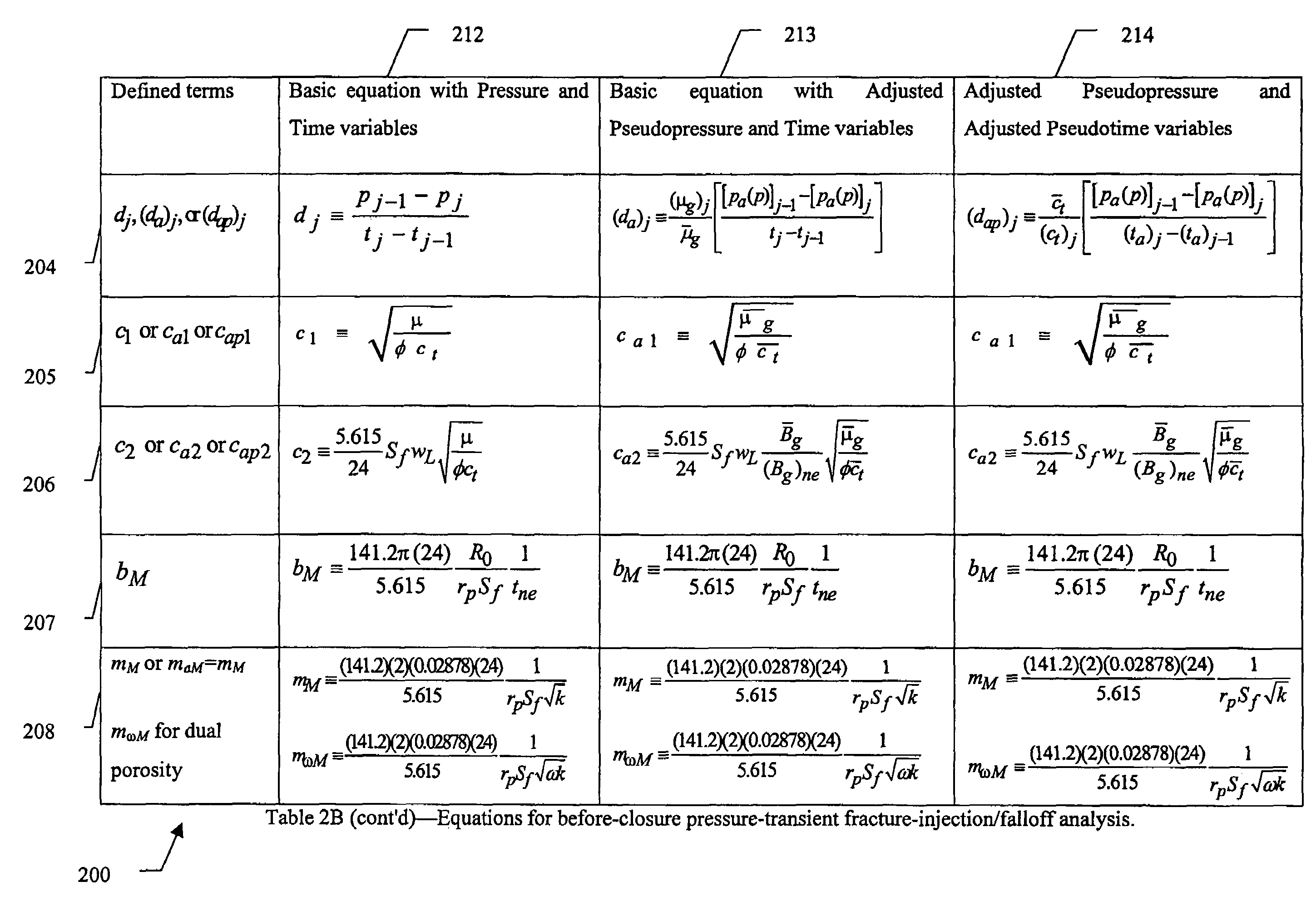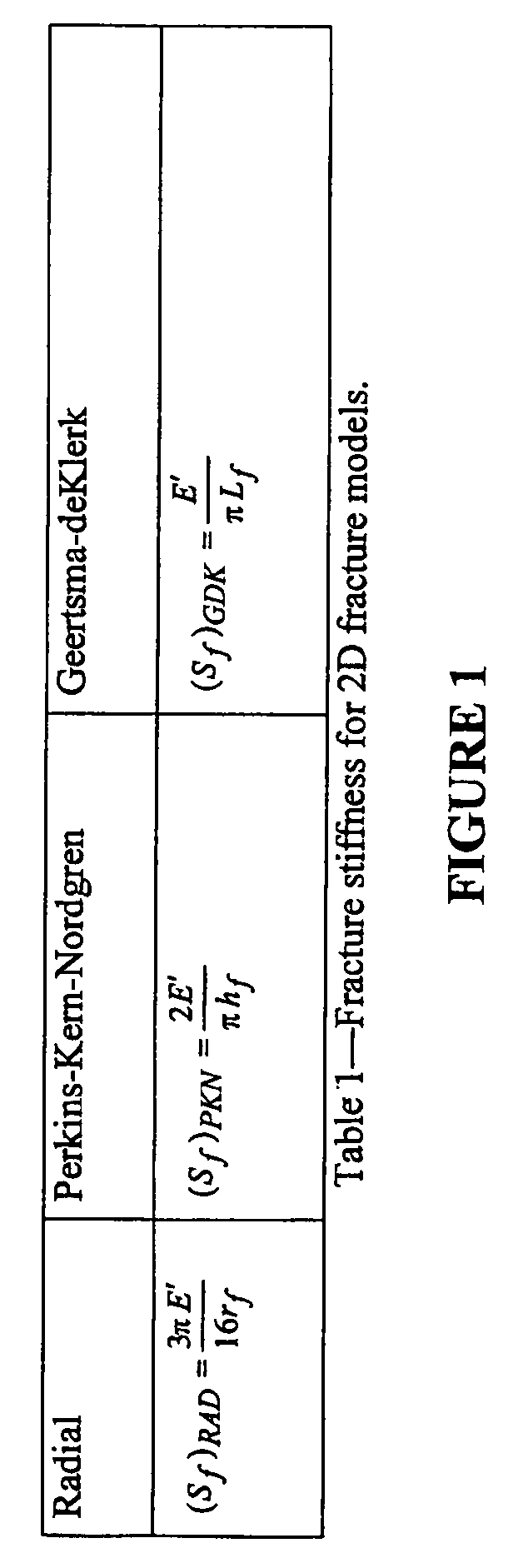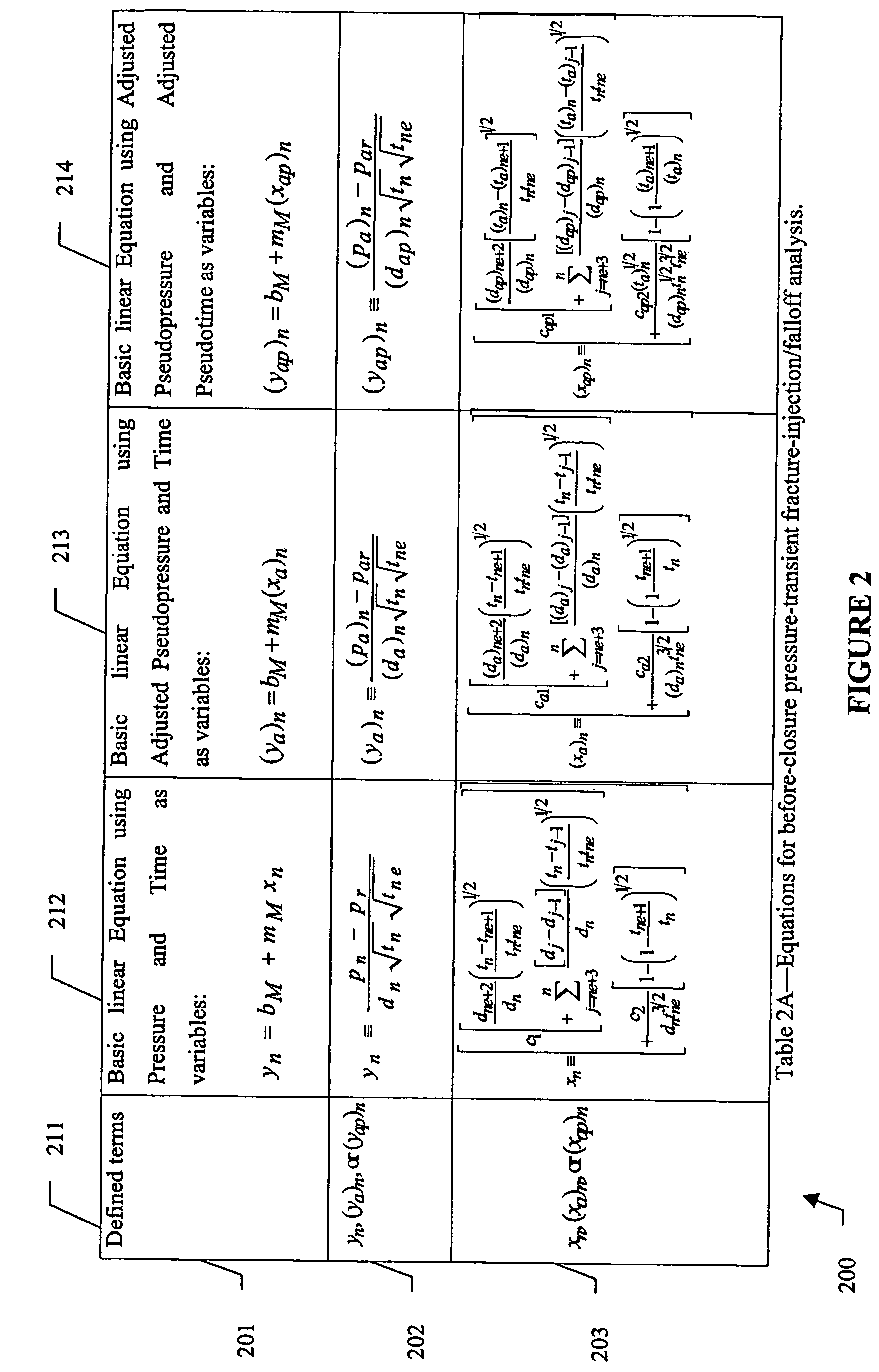Methods and apparatus for estimating physical parameters of reservoirs using pressure transient fracture injection/falloff test analysis
a technology of pressure transient fracture and physical parameters, which is applied in the direction of seismology for waterlogging, instruments, borehole/well accessories, etc., can solve the problems of complex multilayer environment, incompatibility with the reactivity required, and long delay linked with these types of measurements, so as to minimize the effect of errors and mitigate the detrimental effects of pressure-dependent fluid properties
- Summary
- Abstract
- Description
- Claims
- Application Information
AI Technical Summary
Benefits of technology
Problems solved by technology
Method used
Image
Examples
Embodiment Construction
[0105]The methods as shown in the prior art for analyzing the before-closure pressure decline following a fracture-injection / falloff test do not consider a compressible reservoir fluid with either a slightly compressible or compressible injection fluid. Accounting for compressible fluids is accomplished by using pseudovariables, or for convenience, adjusted pseudovariables in the derivation.
[0106]Pseudovariables have been demonstrated in other well testing applications as removing the “nonlinearity” associated with pressure-dependent fluid properties, and using pseudovariable formulations for before-closure pressure-transient fracture-injection / falloff test analysis will minimize error associated with pressure-dependent fluid properties. Definitions of pseudovariables and adjusted pseudovariables can respectively be found in a paper SPE 8279 by Agarwal, R. G.: “Real Gas Pseudo-time—A New Function for Pressure Buildup Analysis of MHF Gas Wells” presented at the 1979 SPE Annual Fall T...
PUM
 Login to View More
Login to View More Abstract
Description
Claims
Application Information
 Login to View More
Login to View More - R&D
- Intellectual Property
- Life Sciences
- Materials
- Tech Scout
- Unparalleled Data Quality
- Higher Quality Content
- 60% Fewer Hallucinations
Browse by: Latest US Patents, China's latest patents, Technical Efficacy Thesaurus, Application Domain, Technology Topic, Popular Technical Reports.
© 2025 PatSnap. All rights reserved.Legal|Privacy policy|Modern Slavery Act Transparency Statement|Sitemap|About US| Contact US: help@patsnap.com



